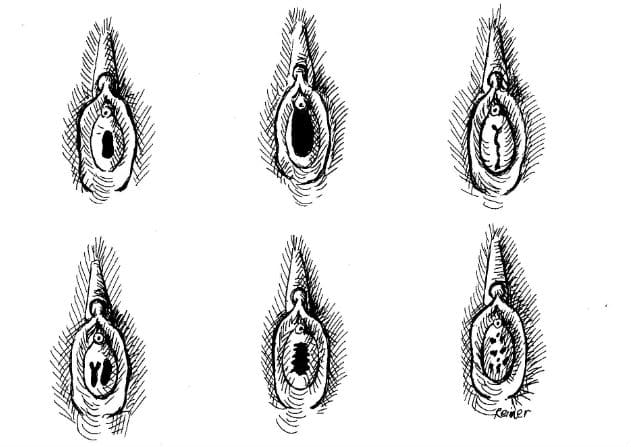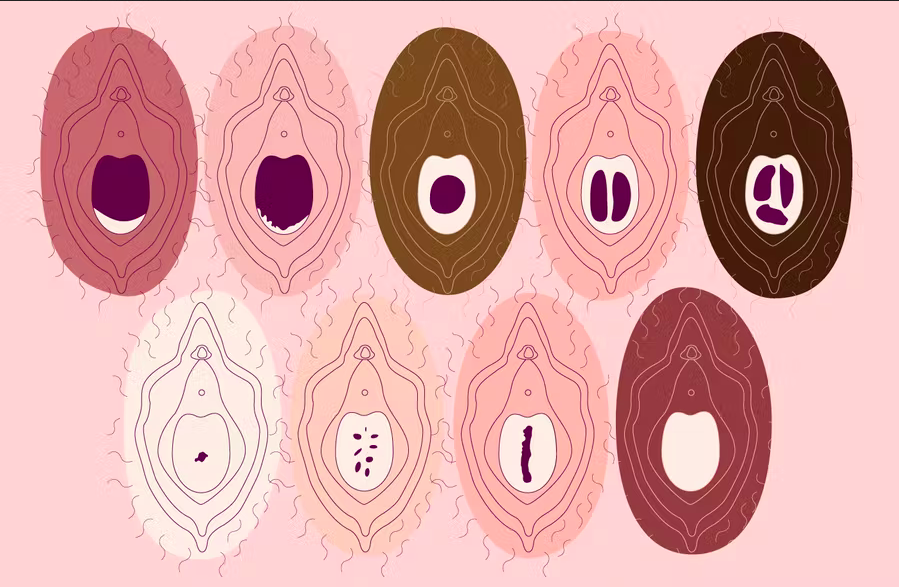– The hymen is a thin piece of mucosal tissue that surrounds or partially covers the vaginal opening.
– Some people are born with imperforate hymens that completely obstruct the vaginal canal.
– The appearance of the hymen can vary, with a common shape being crescent-shaped in children.
– During puberty, estrogen causes the hymen to become more elastic.
– Normal variations of the hymen after puberty range from thin and stretchy to thick and rigid, and in some cases, the hymen may be absent.
– The hymen can tear or rip during first penetrative intercourse, resulting in pain and possible bleeding.
– However, tearing or bleeding from first intercourse is not always common.
– The state of the hymen is not a reliable indicator of virginity.
– The hymen is formed during embryogenesis and normally becomes perforate before or shortly after birth.
– The hymen has dense innervation and can stretch or tear as a result of various behaviors, including the use of tampons, menstrual cups, pelvic examinations with a speculum, or sexual intercourse.
– A glass or plastic rod called a Glaister Keen rod is used for close examination of the hymen.
– In cases of suspected rape or child sexual abuse, a detailed examination of the hymen may be performed, but the condition of the hymen alone is often inconclusive.
– There are various types of hymens, ranging from thin and stretchy to thick and rigid.
– An imperforate hymen occurs in 1-2 out of 1,000 infants and may require surgical intervention.
– The appearance of the hymenal opening can vary in shape and appearance based on hormonal and activity levels.
– Trauma to the hymen during first sexual intercourse does not always result in bleeding, and not all women experience pain.
– Several studies found that half or fewer of virgin rape victims had any injury to the hymen.
– Tears of the hymen occurred in less than a quarter of cases among virgin rape victims.
– Virgins were more likely to have injuries to the hymen than non-virgins.
– Approximately half of adolescents who had consensual sex showed evidence of trauma to the hymen.
– Trauma to the hymen may occur in adult non-virgins following consensual sex, but it is rare and may heal without any visible sign of injury.
– Trauma to the hymen can occur from activities such as tampon or menstrual cup use, pelvic examinations with a speculum, masturbation, gymnastics, or horseback riding, although the true prevalence is unclear.
– The hymen is culturally significant in certain communities as a proof of virginity at marriage.
– Some women undergo hymenorrhaphy to restore their hymen for cultural reasons.
– The UN Human Rights Council, UN Women, and WHO have called for an end to virginity testing as it is considered a form of violence against women.
– In the 16th and 17th centuries, the presence or absence of the hymen was mistakenly seen as evidence of physical diseases such as “womb-fury” or hysteria.
– Many mammals, including chimpanzees, elephants, manatees, whales, horses, and llamas, have hymens.
– The size, shape, and thickness of a hymen vary from person to person.
– The hymen is soft and elastic and does not usually block the vagina’s opening.
– Hymens can break or tear from simple activities like inserting a tampon.
– The hymen has no purpose and does not impact the body, reproductive system, or health.
– The absence of a hymen is not a reliable indicator of whether a person has had sex or not.
Continue Reading


